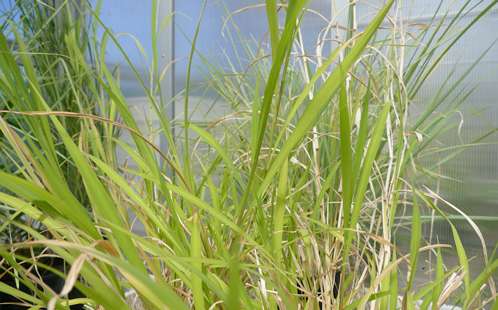Research finds common grass could help boost food security

Australian researchers have discovered that the common Panic grasses could hold the secret to increasing the yields of cereal crops and help feed the world with increasing temperature extremes and a population of nearly 10 billion people by 2050.
The findings, published in Nature Plants, show the potential to improve crop yields for staple foods such as wheat and rice by transplanting enzymes from Panic grasses.
The research was conducted by members of the ARC Centre of Excellence for Translational Photosynthesis, the ANU Research School of Biology and Western Sydney University's Hawkesbury Institute for the Environment.
"Panic grasses contain an enzyme that captures carbon dioxide from the atmosphere more efficiently than other plants in the extreme climate conditions predicted in coming decades," said lead researcher Dr Robert Sharwood from The Australian National University (ANU).
"We are aiming to enhance the growth and yield of crops such as wheat and rice by transplanting this more efficient enzyme into them," he said.
The discovery is a significant development in the quest to use the natural genetic diversity of grasses to increase crop yields in response to concerns that improvements in global crop productivity have stalled.
The researchers have focused on the Rubisco enzyme, which captures carbon dioxide from the air to begin the production of sugars that plants need to grow.
"We were very excited to discover considerable variability in the efficiency of Rubisco from different Panic grasses to convert carbon dioxide into carbohydrates under a wide range of temperatures," said Associate Professor Oula Ghannoum from Western Sydney University.
"Using mathematical simulations of the data, we identified Rubisco enzymes that are best-suited to crops growing under both hotter and cooler temperature conditions," she said.
Associate Professor Spencer Whitney from ANU highlighted that as viable agricultural land runs out, the world needs to do more with the available farming lands.
"On top of this are the changes in climate coming our way in the next few decades and the growing demand for food," he said.
Dr Sharwood indicated that the ARC Centre of Excellence in Translational Photosynthesis aims to discover how to use the world's plant diversity to secure important food crops in a changing world.
More information: Robert E. Sharwood et al. Temperature responses of Rubisco from Paniceae grasses provide opportunities for improving C3 photosynthesis, Nature Plants (2016). DOI: 10.1038/nplants.2016.186
For more information please visit www.photosynthesis.org.au
Journal information: Nature Plants
Provided by University of Western Sydney




















